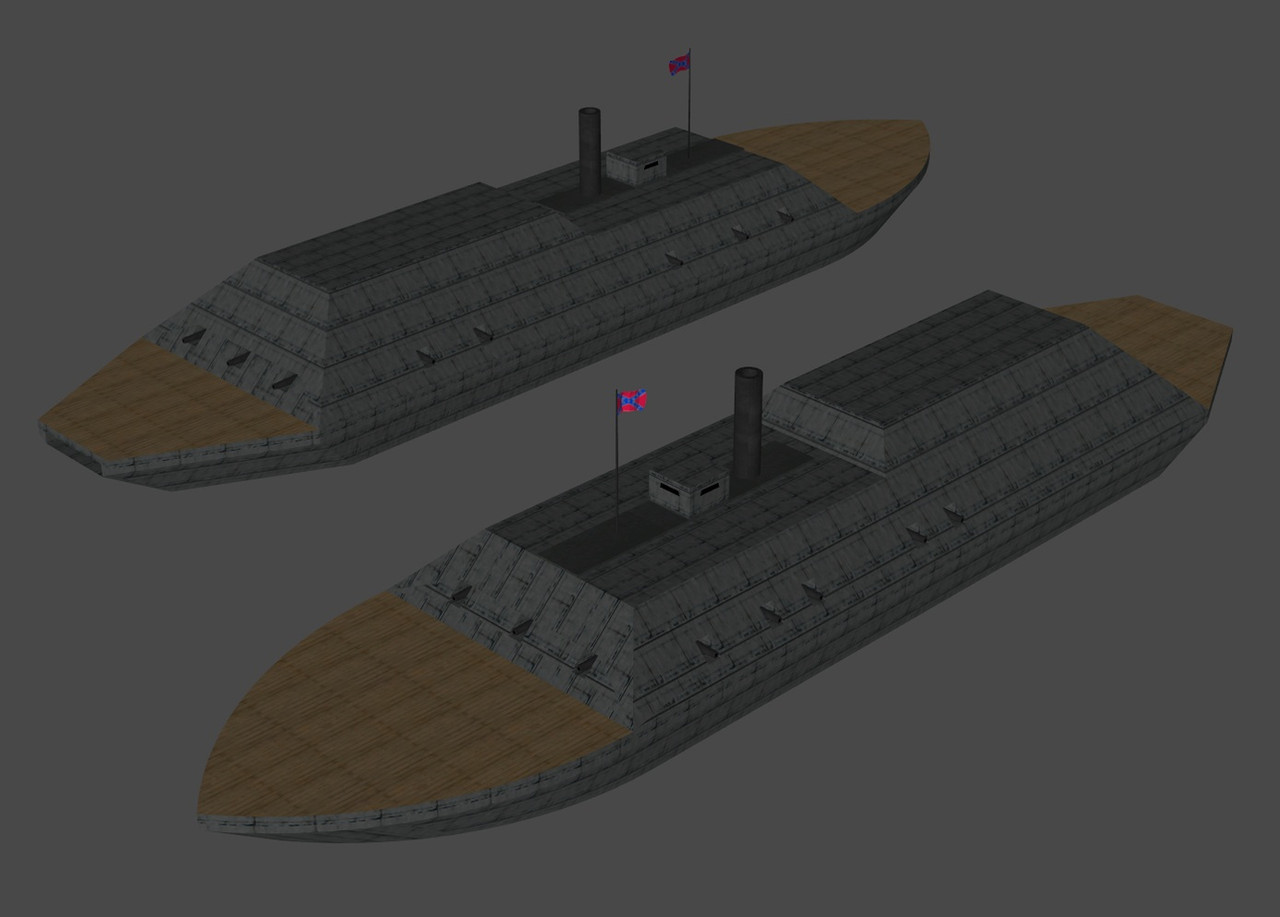HOME | DD
 DigitalExplorations — CSN - CSS Louisiana ironclad ram (STL port)
DigitalExplorations — CSN - CSS Louisiana ironclad ram (STL port)

Published: 2023-11-09 04:30:24 +0000 UTC; Views: 1005; Favourites: 15; Downloads: 1
Redirect to original
Description
Ported to OBJ, textured, and further modified from the STL format low poly waterline tabletop war gaming model created by Patrick Woodard. Preview picture posed in XNALara XPS. You can download Mr. Woodard's original STL model as part of his Confederate Ironclads Pack at the link below but be warned! STL models normally come untextured because they're made for use with 3D printers, with the end user expected to hand paint the 3D printed model. Furthermore I've added extra parts to this one in order to soup it up a bit and make it look somewhat better. If you want this to look the way it does in the above picture (or even better if you have the skill), then you'll have to round up your own textures and extra parts and do the job yourself, just like I did. Here's that link:
www.thingiverse.com/thing:3179…
CSS Louisiana was something of an anomaly among Confederate States Navy (CSN) ironclads from the American Civil War (1862-65). She was built from the keel up as an ironclad, for starters. She also had paddlewheel propulsion, which was uncommon for most CSN ironclads and made her analagous to the Cairo or "Cities" class paddlewheel-powered ironclads being built for the United States Navy (USN), or Union Navy during the war, for shallow-draft Mississippi River basin operations. She was also designed with an independent twin-screw propulsion system to help her steer and given twin rudders, again for the same purpose. She wasn't available for CSN naval service until 6 February 1862 due largely to chronic materials shortages caused by the Union naval blockade of Southern ports and competition for the available labor force from a nearby shipyard that was building the ironclad CSS Mississippi at the same time. Not long after Louisiana was formally commissioned into CSN service the Union navy sent a fleet up the Mississippi River under the command of Admiral David Farragut, and so she was sent downriver with all other available CSN warships to meet this challenge even though she hadn't finished her final fitting out -- which included among other things not having all of her intended armor. She wound up having to be moored to the river bank above Forts Jackson and St. Phillip, and it was there that Farragut's Union fleet found her when they safely made the passage of the forts on 24 April 1862. She managed only to damage the USS Brooklyn, with one of her shots blasting clear though the Union vessel; however, her captain was killed by return Union fire and this coupled with her inexperienced crew effectively silenced any further action from her. She remained in her position until 28 April 1862, and once her crew learned that the area Confederate commander had decided to surrender rather than fight on, they took it upon themselves not to let the Union have Louisiana. They set her afire and then removed themselves to shore, with the blazing ironclad drifting downriver until she was nearly abreast of Fort St. Philip. It was at that point that the fire reached her magazine and she blew up, with her remains sinking not long after that.
Louisiana was considered a failure then and even now as a warship of her time. She was poorly designed and grossly underpowered, thus winding up being able to barely make headway against the river current. It has been pointed out that the layout of her paddlewheels, which were in line instead of side-by-side as was the norm for most peacetime vessels, probably contributed a great deal to this issue. Although she had one of the largest gun batteries ever fitted to a CSN ironclad thanks to her size (16 guns total of mixed types), Louisiana was fitted with whatever guns were available at the time in an effort to hurry her construction. This had the opposite effect and actually slowed things down because many of the gun carriages were either too high or too low for her gunports and had to either be modified accordingly or replaced. She also proved very difficult to maneuver, an issue further complicated by her intended secondary propulsion system never being installed. It is the considered opinion of most naval historians that Farragut and his fleet would have had little trouble dealing with Louisiana even if she had been fully finished and given a properly trained crew, just as he and his fleet would do with the better built and better crewed CSS Tennessee two years later at the Battle of Mobile Bay and given all of Louisiana's various design and performance issues. Of course you may have your own opinion, especially among the CSN "what if" crowd, but those are the facts and the most common conclusion drawn from them. Your opinion I leave up to you.
This model is missing many of the finer details of the original Louisiana. That's because it was originally created for use as a small naval war gaming miniature, and I for my part only added the lower hull structure, the missing guns, and the flagpole. That said I think it's still decent for what it is, and it will do nicely as a placeholder for now. I hope you have fun with it too once you download it and start playing with it yourselves. XD
For non-profit, non-commercial use only. If you use, mod, re-release in original or modded form or do anything else with Mr. Woodard's models, please give him credit for his original handiwork, okay? Thank you.





















